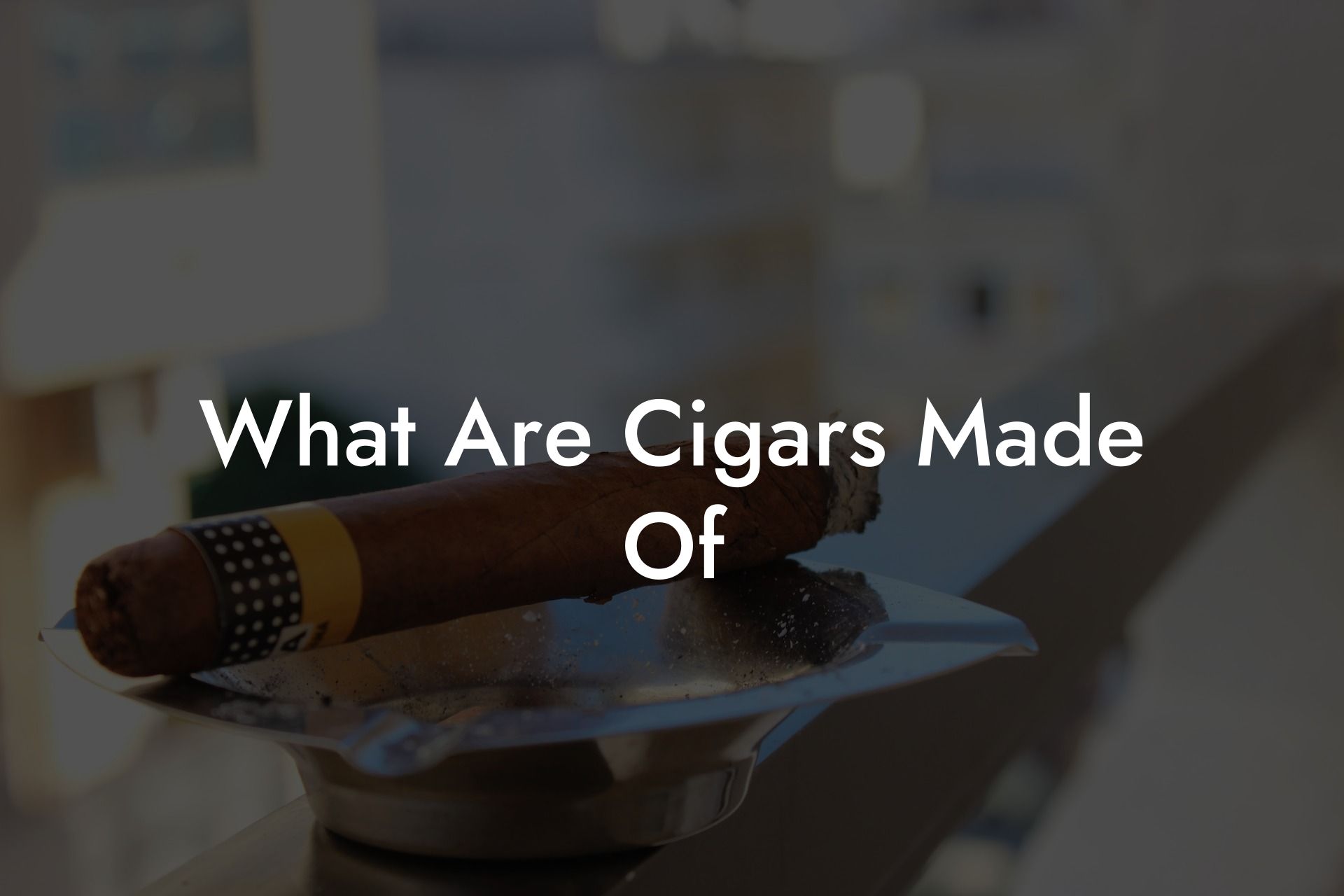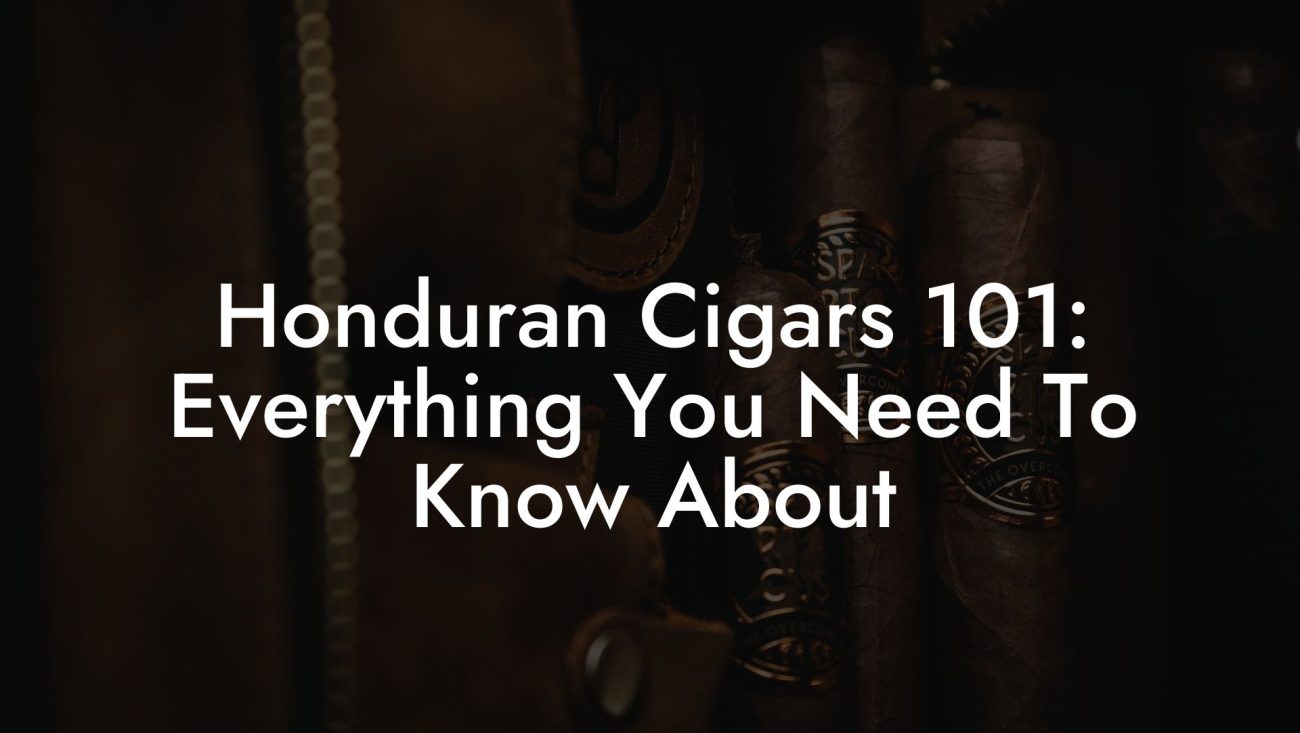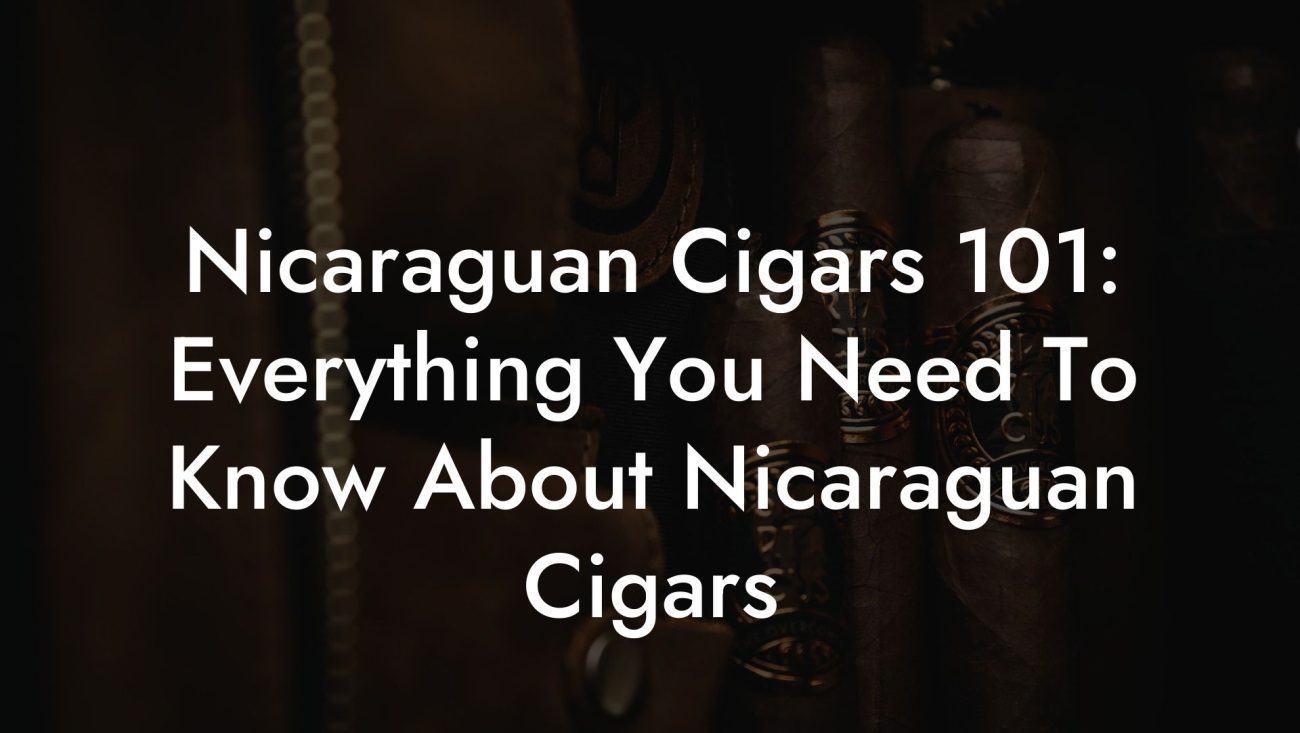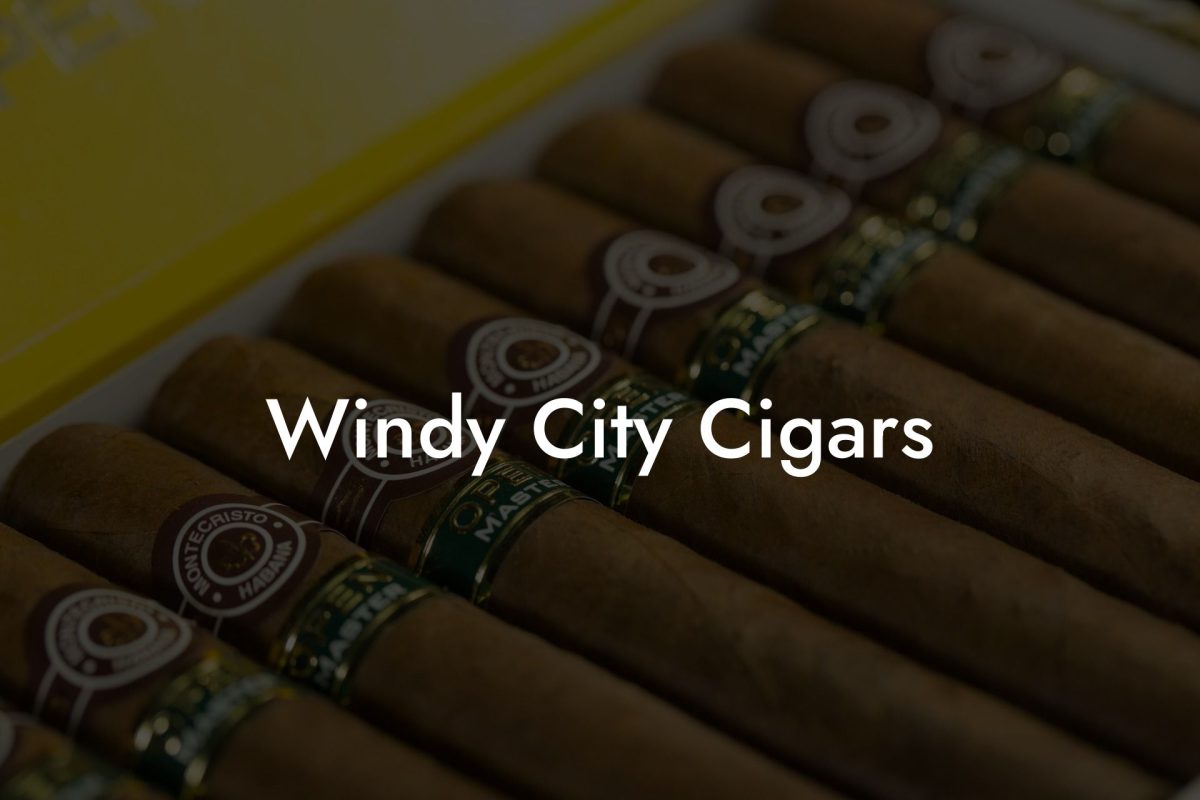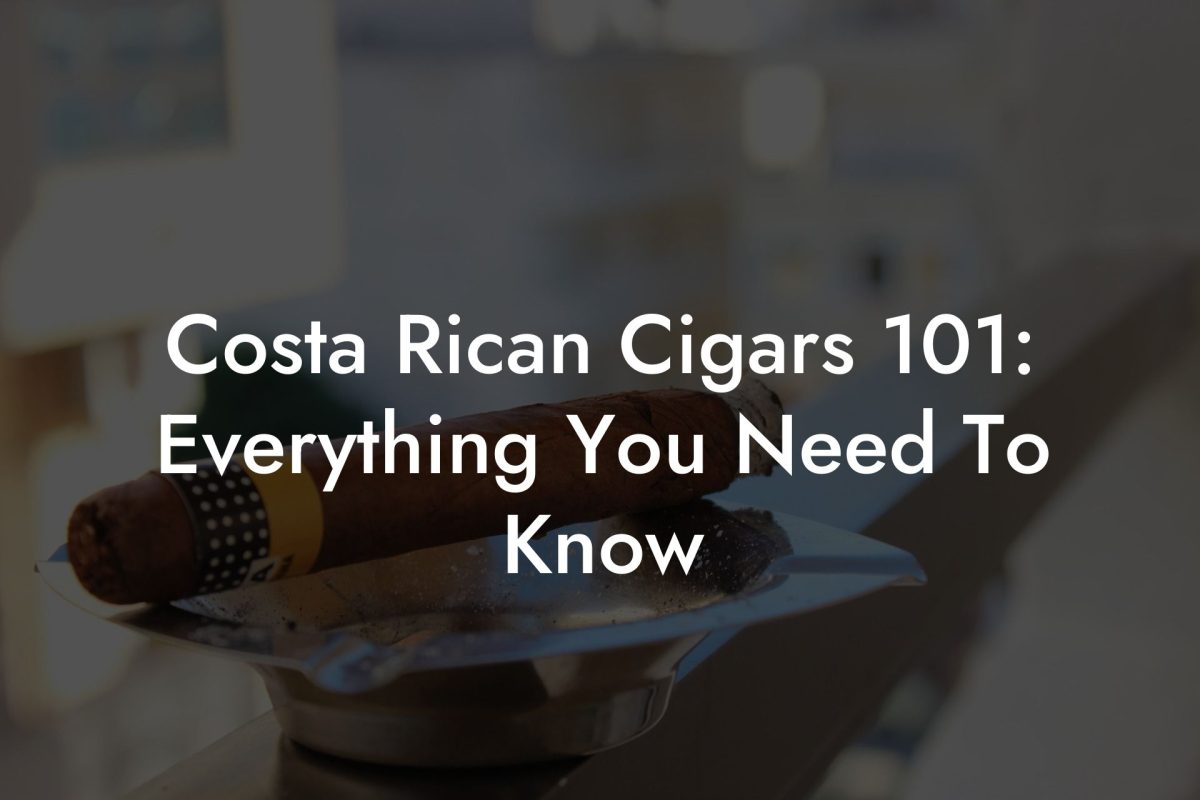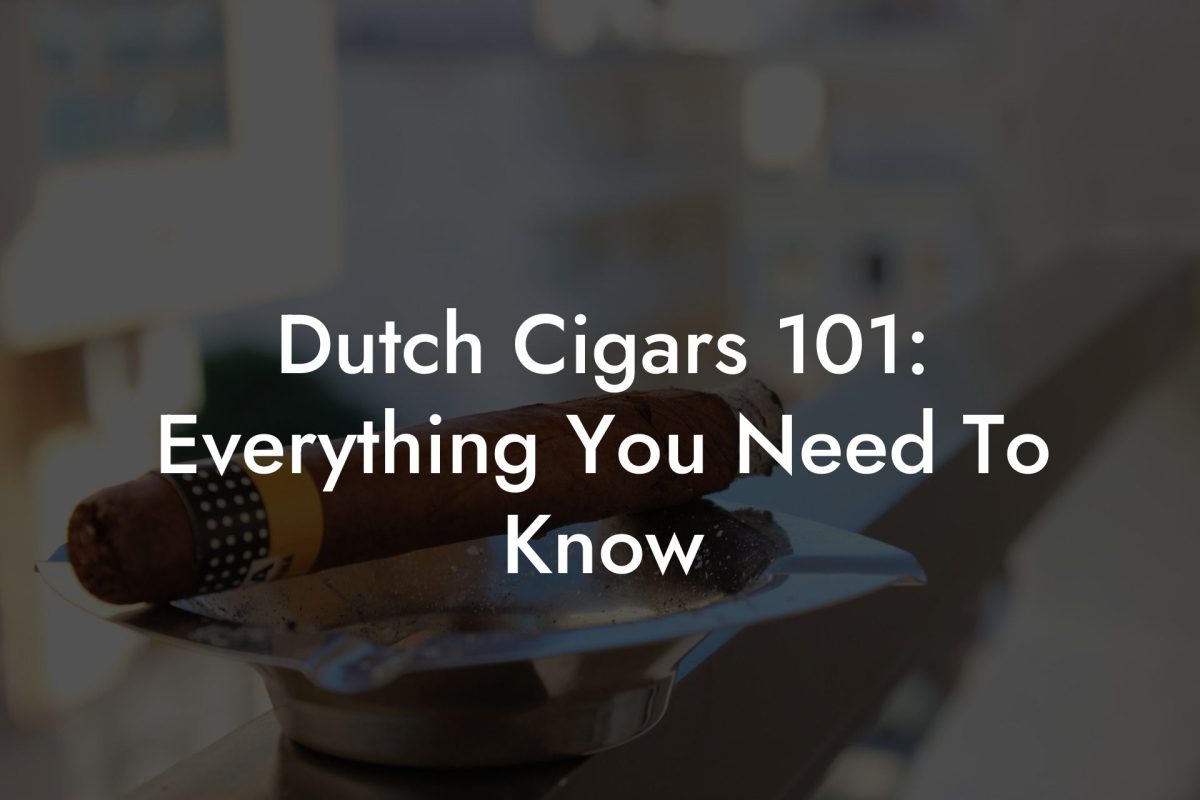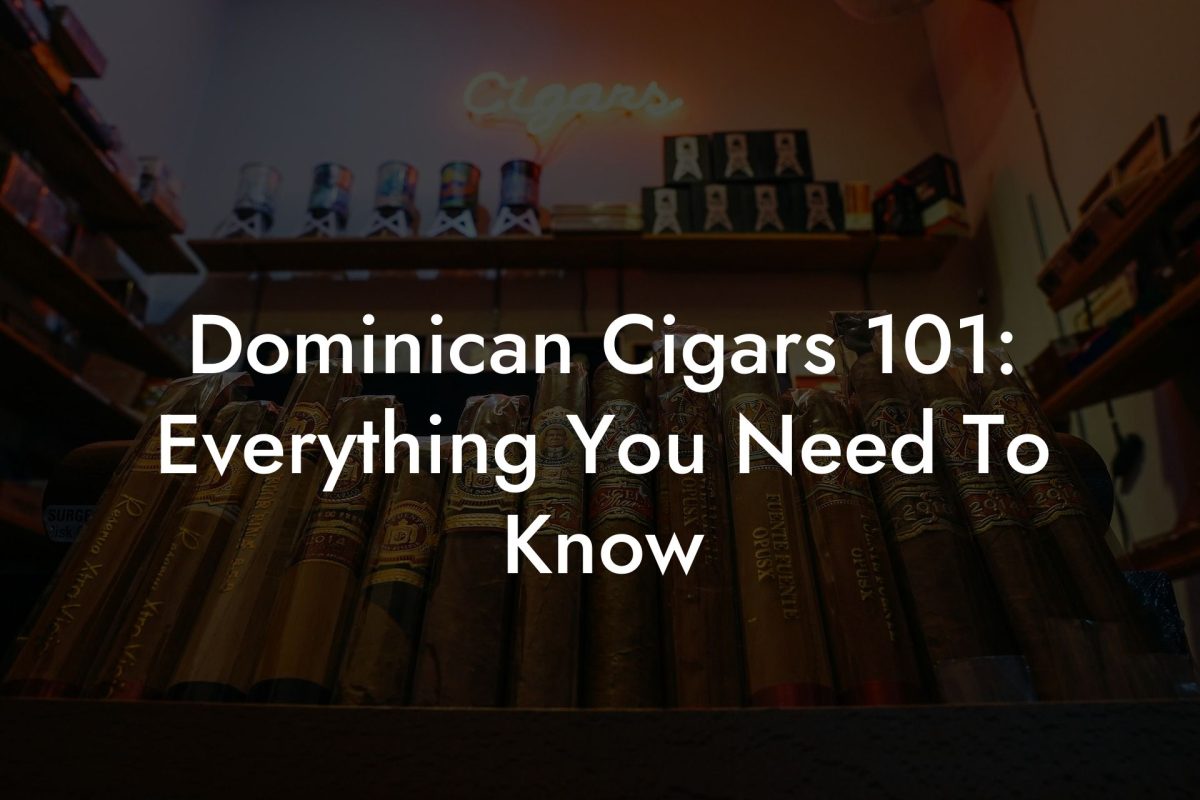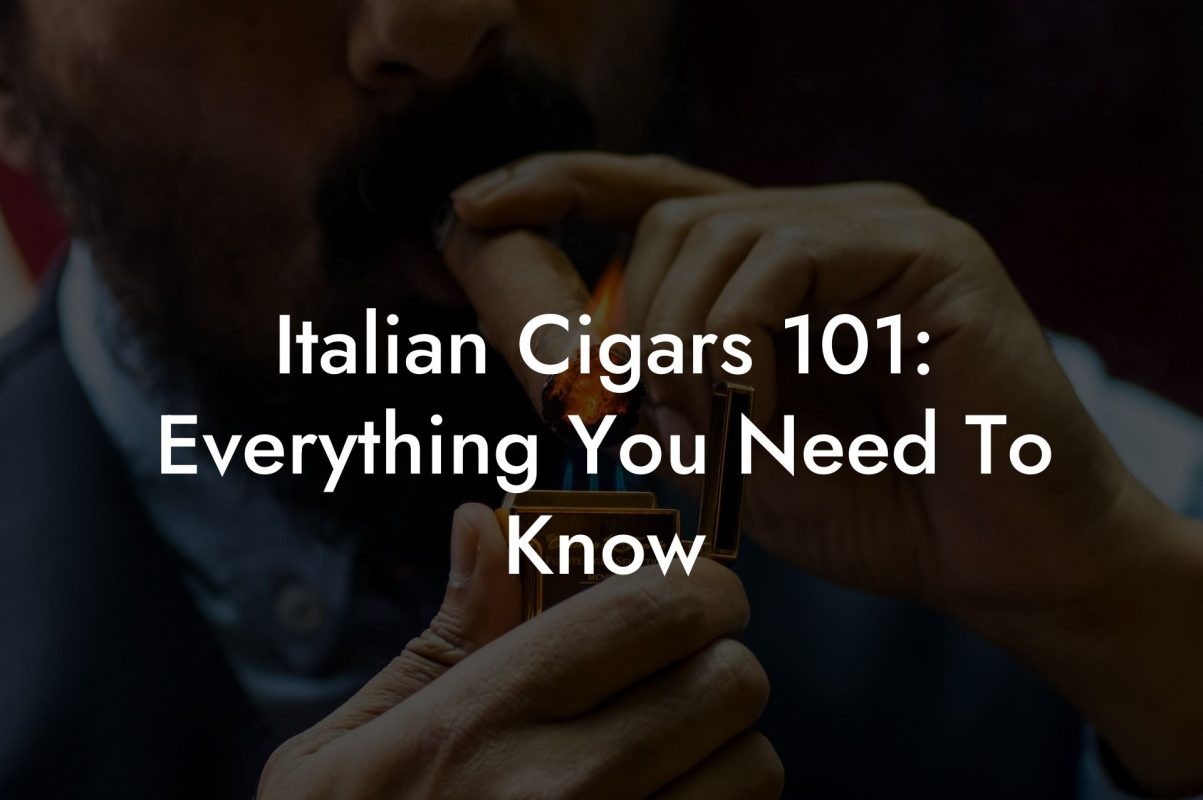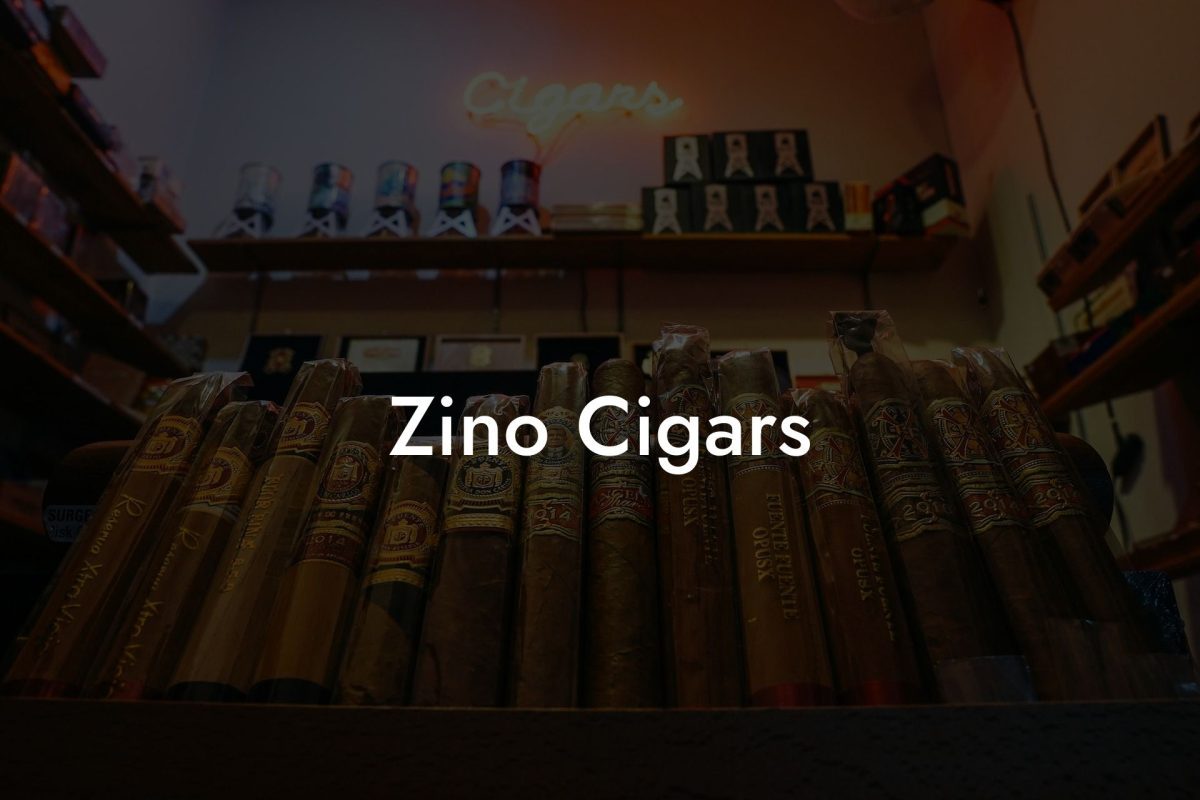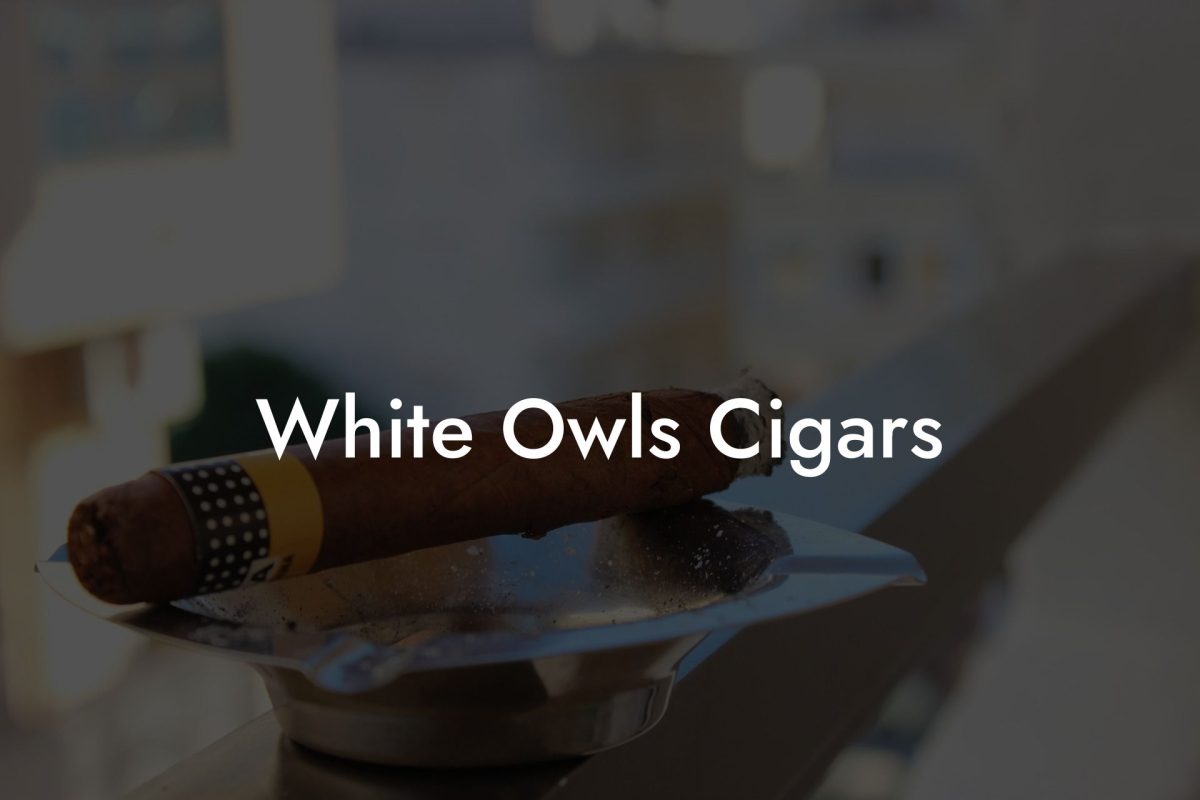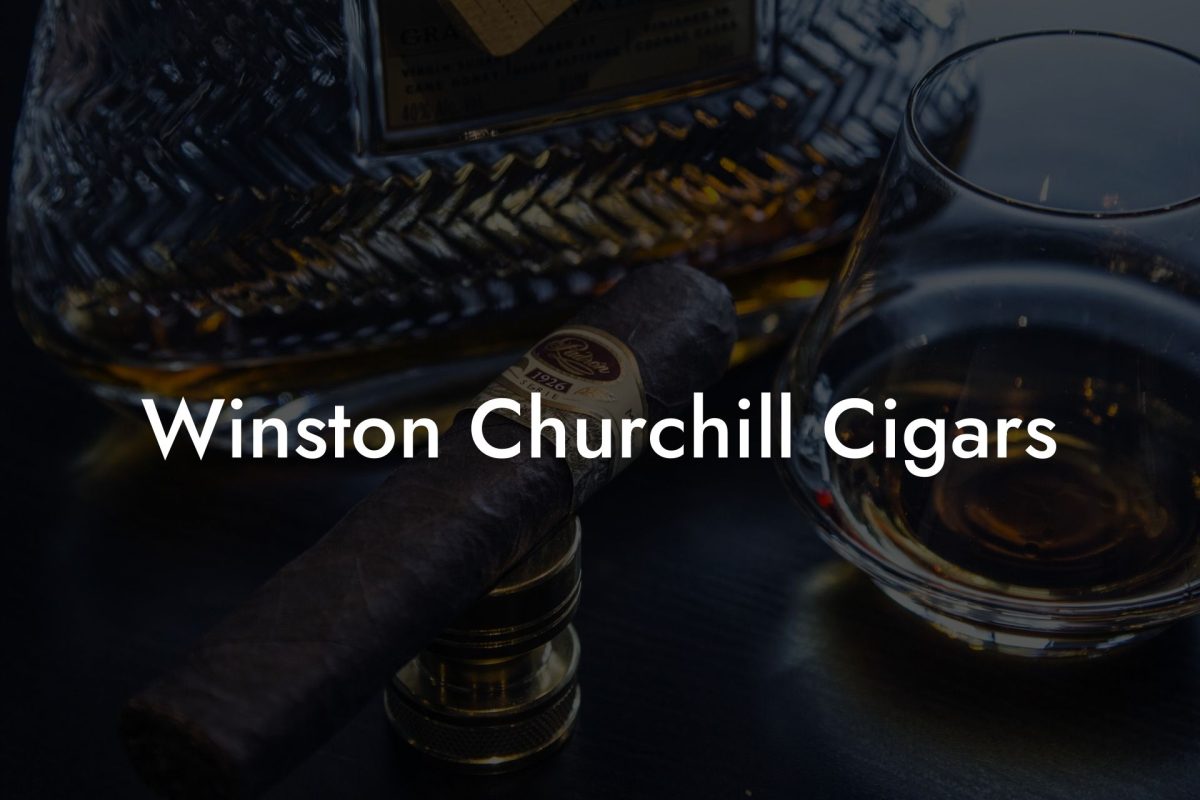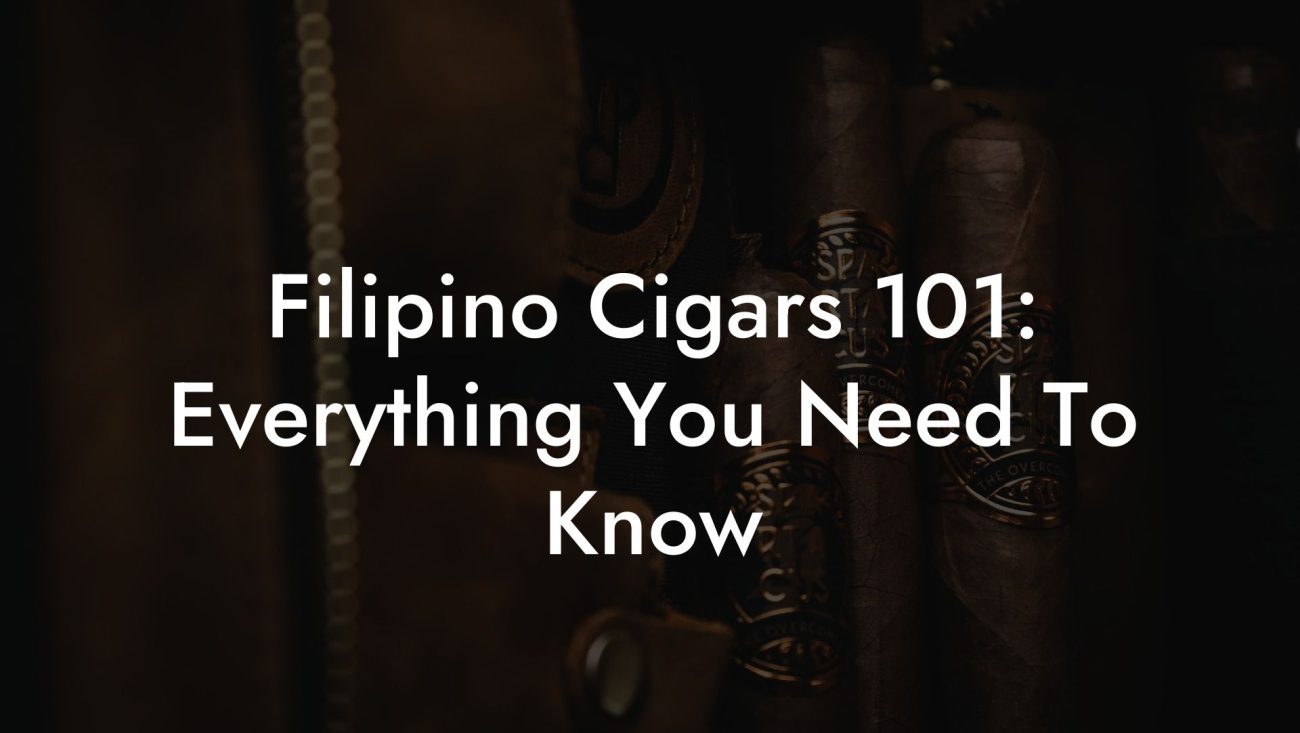Ever wonder if a cigar is more than just rolled-up tobacco leaves? Picture a world where craftsmanship meets centuries of tradition, where nature and science intertwine to create a small work of art you can light up. Cigars are far more than a puff of smoke; they’re a layered symphony of filler, binder, and wrapper leaves, each contributing its own personality, aroma, and flavor profile. Get ready to dive into the fascinating universe of cigar-making, a journey that melds agricultural passion, artisanal mastery, and a hint of rebellious style perfect for today’s Gen-Z trailblazers and millennial connoisseurs.
What Are Cigars Made Of Table of Contents
The Anatomy of a Cigar: What Exactly Are They Made Of?
From Tobacco Seed to Leaf: The Agricultural Journey
The Art and Science of Cigar Crafting
Cultural Roots and Modern Appeal: The Evolution of Cigar Culture
Technological Innovations in Cigar Production
Curing, Fermentation, and Aging: The Alchemy Behind the Flavor
Decoding Flavor Profiles: What Are Cigars Made Of, Really?
Gen-Z, Millennials, and the Modern Cigar Renaissance
Resources and Community Support: Your Next Steps in the Cigar World
Cigars and Lifestyle: Embracing the Experience
The Anatomy of a Cigar: What Exactly Are They Made Of?
At first glance, a cigar might seem like just another smoke, but behind that elegant exterior lies a meticulous process filled with art and science. A classic cigar is essentially comprised of three core components: the filler, the binder, and the wrapper. Each element plays a vital role in determining the overall flavor, burn, and experience.
Filler: The Heart and Soul
The filler is the innermost layer of a cigar and is a blend of various tobacco leaves. Depending on the blend, the filler can be made up of a single type of leaf or a mixture of different varieties. This medley creates the rich, complex flavors that set the cigar apart. Think of it as the secret sauce, carefully curated from leaves sourced from distinct regions, each contributing its unique character.
The blend might include mild, medium, or robust leaves, and the balance between these types is crucial for achieving the desired taste profile. For instance, some cigars lean on earthy, spicy notes while others burst with hints of chocolate, coffee, or even floral undertones. The magic really happens as the filler burns, releasing a complex tapestry of flavors that keep aficionados coming back for more.
Binder: Keeping It All Together
Next up is the binder, a critical yet often unsung hero in the cigar-making process. The binder leaf holds the filler together, ensuring that the cigar remains structurally sound. Often thicker and less aesthetically perfect than the wrapper, the binder's primary role is to act as the glue that binds the filler, allowing for a consistent and even burn. Without this robust support, the intricate blend of tobaccos in the filler would fall apart, both literally and figuratively.
Wrapper: The Elegant Face
Perhaps the most visually striking component of a cigar is its wrapper. This outermost leaf is the first thing you see, and often the most expensive, as it needs to be flawless in appearance. The wrapper not only contributes to the cigar’s aesthetic appeal but also significantly influences its flavor. With subtle hints of sweetness, spice, or a deep, earthy quality, the wrapper provides that final flourish to the overall smoking experience.
Together, these components create a dynamic, well-balanced cigar where every layer plays a distinct role. The artistry and precision behind combining these elements have evolved over centuries and continue to thrive in today’s world, marrying tradition with modern-day innovations.
From Tobacco Seed to Leaf: The Agricultural Journey
Before the intricate art of cigar-making even begins, it all starts in the field. Tobacco cultivation is both an agricultural and artistic endeavor. Farmers carefully select tobacco seeds that will eventually flourish into the lush, leafy canvases used in cigars. These dedicated growers must navigate challenges such as climate variability, soil quality, and pests, all while maintaining a deep respect for tradition.
The Growing Process
Tobacco plants thrive in warm climates with plenty of sunshine. From the moment a seed is sown, vast amounts of care go into nurturing these plants. They are meticulously watered, monitored, and treated with minimal chemicals whenever possible to ensure that the final product is as natural as it can be. For those who appreciate artisanal integrity, knowing that the very leaves in their favorite cigar were raised with such precision adds to the overall allure.
Harvesting and Curing
Once the tobacco plants mature, they are carefully harvested by hand. This isn’t a job for the faint-hearted, each leaf must be inspected and sorted based on size, texture, and color to ensure only the best make it into the cigar production process. The leaves then enter the curing phase, where they are hung to dry in controlled environments. This curing process isn’t just about drying the leaves; it’s the first step in unlocking complex flavors and aromas through a slow, deliberate transformation.
Curing helps convert the tobacco’s natural sugars and starches, setting the stage for the subsequent fermentation process, which further enhances the cigar’s character. This agricultural journey from seed to leaf, though full of challenges, ultimately creates the raw materials that are the backbone of every exceptional cigar.
The Art and Science of Cigar Crafting
With the carefully selected and cured tobacco leaves in hand, the next step is where tradition meets precision: the actual making of the cigar. Cigar production is an art form that has been refined over centuries, blending old-world techniques with modern quality control innovations.
Handmade vs. Machine-Made: The Craftsmanship Debate
In the world of cigars, there’s a clear distinction: handmade cigars and machine-made cigars. Handmade cigars are crafted by skilled torcedores, master artisans who have often spent years perfecting their craft. Each cigar is rolled with meticulous attention to detail, ensuring that the filler, binder, and wrapper come together seamlessly. This process is inherently personal, with the torcedor’s experience and slight hand movements influencing the final product.
On the other side of the spectrum, machine-made cigars offer consistency and efficiency. These cigars are produced on large scales and can be more affordable for casual enjoyment. While some purists argue that machine-made cigars lack the soul of their handmade counterparts, technology has certainly closed the gap, delivering high-quality products to a broader audience.
Fermentation and Aging: The Alchemy of Flavor
One of the most fascinating aspects of cigar-making is the fermentation process. After the curing stage, tobacco leaves undergo fermentation, a natural, chemical process that reduces harshness and enhances flavor by breaking down nicotine and other compounds. This step is akin to the aging of fine wine, where time and nature conspire to transform raw material into something sublime.
Aging further refines the tobacco’s taste profile, often resulting in a mellower and more complex smoke. Some cigars are aged for several years before they ever reach a connoisseur’s hands. This attention to detail and commitment to excellence is what elevates the cigar from a mere indulgence to a refined ritual.
In a world that glorifies instant gratification, the slow, deliberate process of fermentation and aging serves as a reminder that quality often takes time. It’s a patient art, a blend of nature, expertise, and a pinch of alchemy.
Cultural Roots and Modern Appeal: The Evolution of Cigar Culture
Cigars have long been symbols of indulgence, sophistication, and camaraderie. Traditionally associated with power brokers, celebrities, and the elite, the cigar culture has evolved significantly over time. Today, a new wave of cigar enthusiasts, particularly among Gen-Z and millennials, are redefining what it means to appreciate a fine cigar.
history Meets Modern-Day Innovation
Historically, cigars were viewed as a luxury reserved for special occasions or moments of celebration. Over time, however, the narrative shifted as more people began to appreciate the intricate process behind each cigar. Today’s aficionados are not just lighting up, they’re diving deep into the world of tobacco cultivation, traditional rolling techniques, and the science of aging.
Modern cigar culture has embraced social media, where influencers and enthusiasts share their latest discoveries, unboxings, and even pairings with craft cocktails or gourmet foods. This dynamic environment has democratized the once-exclusive world of cigars, making it accessible to anyone with a curious palate and an appetite for adventure.
Aesthetic and Lifestyle: More Than Just a Smoke
For many young adults, cigars are not merely a smoking experience, they’re a lifestyle statement. The ritual of selecting a cigar, appreciating its design, and savoring the moment is intertwined with broader trends in wellness, mindfulness, and self-expression. Whether it’s the tactile pleasure of handling a perfectly rolled cigar or the communal vibe at a cigar lounge, this experience speaks to those who value quality and authenticity.
Moreover, sustainability and ethical production are increasingly important to today’s consumers. Many cigar brands are now highlighting eco-friendly farming practices, fair trade sourcing, and innovative techniques to reduce waste. It’s a culture that honors tradition while embracing the future, a perfect match for the forward-thinking spirit of Gen-Z and millennials.
Technological Innovations in Cigar Production
While the roots of cigar production stretch back centuries, technology has ushered in a new era of precision and consistency. From advanced curing techniques to high-tech quality control, modern innovations are enhancing classic methods without sacrificing the artisanal essence of cigar-making.
Advanced Curing and Monitoring Systems
The transition from traditional air-curing to climate-controlled systems has revolutionized tobacco preparation. Using state-of-the-art humidity and temperature monitoring, producers can now ensure that every leaf reaches its optimum state. These advancements help standardize quality, reduce waste, and even shorten processing times while still honoring the natural fermentation process.
Precision Fermentation
Fermentation has always been as much an art as it is a science, but modern producers are now using data analytics and controlled ventilation to fine-tune the flavor profiles of their tobacco. By carefully controlling the environment, manufacturers can achieve consistent results that retain the handcrafted feel while pushing the envelope in taste complexity.
Digital Integration in Quality Control
Quality control in cigar production has also benefited from digital integration. High-resolution imaging and machine learning algorithms now help detect imperfections in binder or wrapper leaves before they become part of a finished cigar. This blend of tradition and tech ensures that each product not only meets but exceeds consumer expectations.
These technological strides guarantee that every cigar is a precise blend of tradition, innovation, and uncompromising quality, a nod to both modern production standards and an enduring heritage.
Curing, Fermentation, and Aging: The Alchemy Behind the Flavor
The transformation from a humble tobacco leaf to a complex smoking experience is an alchemical process that deserves a standing ovation. The multi-step procedure of curing, fermenting, and aging is where science and artistry converge to produce the rich, vibrant flavors found in a well-crafted cigar.
The Curing Stage
Curing is the first critical stage after harvesting. Tobacco leaves are laid out in barns or hangars where they are carefully dried under natural conditions. This process isn’t rushed, leaves sit for weeks, slowly losing moisture and beginning chemical changes that pave the way for flavor development. During curing, the transformation of sugars and chlorophyll begins, setting the stage for the more complex processes to come.
Fermentation: Nature’s Proofing Process
The fermentation stage is akin to a natural aging process where the leaves are stacked in controlled environments. Here, the leaves are allowed to undergo biochemical reactions that mellow harsh compounds and enhance desirable flavor notes. Fermentation helps to break down the tobacco’s natural fibers, resulting in a smoother, less abrasive smoking experience. Many aficionados believe that this process is what gives cigars their signature depth and character.
Aging: Time as the Ultimate Connoisseur
Aging is where patience truly pays off. After fermentation, cigars are stored in specific conditions that allow the flavors to marry and mature over time. Some premium cigars are aged for several years before they hit the market, developing a mellowness and complexity that only time can create. Much like the finest wines, the aging process in cigars is revered for its ability to transform a good smoke into a sublime sensory experience.
The interplay between these stages is a testament to the dedication and expertise of those who work tirelessly to produce cigars that are worthy of connoisseurship. Every step of the process contributes to the final product’s unique flavor profile, a marvel of natural transformation and human ingenuity.
Decoding Flavor Profiles: What Are Cigars Made Of, Really?
Beyond the physical components lies an intricate network of flavors and aromas that define a cigar’s character. When you ask, “What are cigars made of?” the answer goes beyond mere tobacco leaves. It’s the subtle interplay of soil, climate, craftsmanship, and time, all converging to create that unforgettable taste.
The Impact of Soil and Climate
Much like wine, the flavor of a cigar is deeply influenced by the terroir where the tobacco is grown. Rich, volcanic soil, along with the right balance of sun and rain, contributes to the unique chemical makeup of the leaves. Regions such as the Dominican Republic, Nicaragua, Cuba, and Honduras each bring distinct characteristics to the table, resulting in cigars that can vary dramatically from one another.
Blending Techniques and Tobacco Varieties
Expert blenders mix different types of tobacco leaves to achieve a balanced profile. The careful selection of mild versus robust leaves, along with the way they’re aged and fermented, creates an ensemble of flavors that come together in perfect harmony. This balancing act requires not only extensive knowledge of each tobacco variety but also an unbridled creativity that borders on artistry.
The Role of Additives (or the Lack Thereof)
Authentic cigars rely solely on tobacco for their flavor. Unlike some products that benefit from additional flavoring agents or additives, genuine hand-rolled cigars are a pure expression of their natural ingredients. This purity is what many aficionados celebrate, as it represents a direct connection to nature and timeless craftsmanship.
The flavors in a cigar can vary from sweet and nutty to spicy or earthy, with each draw offering new layers to uncover. It’s a journey of taste that speaks to those who appreciate the complexity and authenticity of the smoking experience, where every puff tells a story.
Gen-Z, Millennials, and the Modern Cigar Renaissance
In today’s fast-paced world, where trends come and go in the blink of an eye, the cigar industry is experiencing a renaissance. Dynamic, socially conscious, and tech-savvy, Gen-Z and millennial enthusiasts are reshaping the cigar landscape. They’re drawn not only to the rich flavors and storied traditions but also to the sustainable practices and innovative approaches that modern cigar makers are embracing.
A Shift Toward Sustainability and Transparency
Modern consumers care about where their products come from, and cigars are no exception. Many leading brands now emphasize eco-friendly farming practices, organic cultivation methods, and transparent production processes. These initiatives speak to a generation that values health, environmental stewardship, and ethical business practices.
The Intersection of Culture and Community
For today’s cigar lovers, the experience goes beyond the smoke. It’s about community, discussion, and shared experiences on social media platforms. From Instagram-worthy packaging to virtual cigar tasting events, the culture is evolving to meet the interests of a digital generation. Influencers and bloggers are shedding light on the craft, offering reviews, pairing suggestions, and even behind-the-scenes looks at the cultivation and manufacture of cigars.
A New Aesthetic of Indulgence
The modern cigar experience combines traditional luxury with an edgy, contemporary twist. It’s as much about enjoying a sophisticated moment as it is about making a statement. Whether at a chic lounge or during a casual backyard gathering, cigars have become a symbol of refined taste and intentional living.
This rejuvenation of cigar culture has opened the door for new enthusiasts and has reinvigorated a timeless art form, bridging the gap between old-world tradition and modern innovation.
Resources and Community Support: Your Next Steps in the Cigar World
If you’re ready to explore the vibrant world of cigars further, numerous resources and communities are waiting to welcome you. Here are some ways to continue your journey:
- Cigar Lounges and Social Clubs: Visit local lounges or join online communities to share experiences, discuss different blends, and gain firsthand insights from seasoned aficionados.
- Educational Workshops: Many cigar bars and specialty shops offer classes that cover everything from the basics of cigar anatomy to advanced tasting techniques and proper storage practices.
- Tobacco Farm Tours: Some regions with rich tobacco histories provide tours of tobacco farms and curing barns, offering a behind-the-scenes glimpse into the journey from seed to smoke.
- Online Forums and Social Media Groups: Platforms like Reddit, Facebook, and Instagram are buzzing with cigar enthusiasts sharing reviews, photos, and tips on cigar care.
- Books and Documentaries: For those who prefer to dive deep with reading or viewing, there are countless books and documentaries detailing the history, craft, and cultural significance of cigars.
Whether you’re looking to refine your smoking technique, network with fellow enthusiasts, or simply learn more about this storied art, there’s a vibrant community waiting to embrace you. This is your chance to experience cigar culture in all its complexity, mixing tradition with the innovative spirit of today's world.
Cigars and Lifestyle: Embracing the Experience
Lighting up a cigar is more than just a momentary pleasure, it’s a form of self-expression. Today’s cigar culture is woven into the fabric of lifestyle, merging relaxation, art, and even a bit of rebellion. It’s about savoring the present moment, engaging in thoughtful conversations, and enjoying life’s intricacies.
Pairing Cigars with Food and Drink
One of the most delightful aspects of cigar enjoyment is the art of pairing. Whether it’s a robust espresso, a fine wine, or a craft cocktail, the right pairing can elevate your cigar experience to new heights. Food pairings are especially popular among millennials and Gen-Z, who enjoy exploring the interplay between diverse flavors and aromas.
Mindfulness and the Ritualistic Nature of Smoking
In an age where mindfulness and intentional living are celebrated, the ritual of smoking a cigar offers a welcome respite from daily stress. From selecting your cigar to the slow burn and eventual exhale, each step invites you to be present and savor the moment, a counterbalance to our often hyper-connected lifestyles.
Integrating a cigar into your routine can transform a quick break into an immersive ritual of reflection, conversation, and taste exploration. It’s an experience that, while rooted in tradition, resonates deeply with the contemporary pursuit of calm and authenticity.
Frequently Asked Questions About Cigars
Whether you’re a curious novice or a seasoned aficionado, these FAQs tackle some of the most common inquiries about cigars and their intricate makeup.
1. What are the primary components of a cigar?
Every cigar is made up of three essential components: the filler (the inner blend of tobacco leaves that creates flavor), the binder (which holds the filler together), and the wrapper (the outer, high-quality leaf that determines much of the cigar’s aroma and appearance).
2. How does the fermentation process affect a cigar’s flavor?
Fermentation helps to reduce harsh compounds in tobacco while developing complex flavors. During this process, chemical reactions transform the tobacco’s natural constituents, resulting in a smoother, richer taste overall.
3. Are handmade cigars better than machine-made ones?
Handmade cigars are prized for their artisanal quality and unique character, but machine-made cigars can provide consistency and affordability. The choice often depends on personal taste and the experience you seek.
4. How important is the wrapper leaf in determining flavor?
The wrapper is highly influential, it not only gives the cigar its elegant look but also imparts subtle flavor notes (such as sweetness, spice, or earthiness) that complement the overall blend.
5. Can the terroir of tobacco influence the cigar’s taste?
Absolutely. Soil composition, climate, and regional farming practices (known as terroir) play a significant role in shaping the flavor, aroma, and overall quality of the tobacco used in cigars.
6. What distinguishes a premium cigar from an everyday smoke?
Premium cigars are often handmade, using carefully selected and aged tobacco leaves that have undergone a detailed curing and fermentation process. They emphasize artisanal craftsmanship and consistency, resulting in a more complex and refined flavor profile.
7. How do modern sustainability practices impact cigar production?
Many modern producers focus on sustainable farming, ethical sourcing, and environmentally friendly production methods. These practices help ensure that high-quality tobacco is grown responsibly, resonating with today’s eco-conscious consumers.
8. Can cigars be enjoyed by those new to the culture?
Definitely! While there is a learning curve to understanding the nuances of flavor and construction, many brands offer milder options that are perfect for beginners, and a wealth of resources is available to help newcomers appreciate the art.
9. What is the ideal way to store cigars?
To maintain their quality and flavor, cigars should be stored in a humidity-controlled environment (typically around 65-70% relative humidity). Many enthusiasts invest in a humidor, a specialized storage box, to keep their cigars in peak condition.
10. How does age impact a cigar’s smoking experience?
Aging allows the flavors within the tobacco to mellow and integrate. Many premium cigars are aged for several years before release, creating a smoother, more complex smoking experience that evolves with each draw.
Your Journey Through the Intricacies of Cigar Crafting
From the fertile fields where tobacco plants sway in the sun to the skilled hands that roll each cigar with precision, the story of cigars is one of passion, tradition, and relentless innovation. Every component, the robust filler, the steadfast binder, and the artistic wrapper, comes together to craft a sensory experience that is both timeless and ever-evolving.
Embracing the world of cigars means appreciating a rich heritage that spans cultures and centuries. It’s a journey that invites you to explore sustainable practices, immerse yourself in modern innovations, and find a community that celebrates the art of living deliberately. For Gen-Z and millennial enthusiasts alike, cigars offer a unique blend of old-world charm and contemporary cool, a ritual that is as much about mindfulness and aesthetics as it is about indulgence.
Step into this realm where every leaf tells a story, every puff ignites tradition, and every moment is a celebration of art, culture, and the unapologetic pursuit of excellence. Your journey through the intricacies of cigar crafting isn’t just about smoking, it’s about savoring life, one carefully crafted draw at a time.

